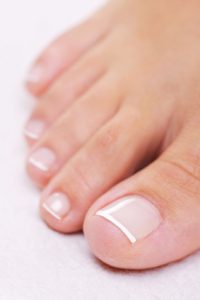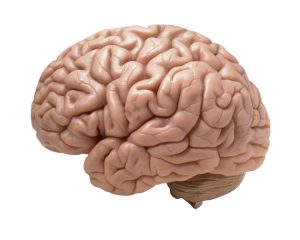
If you’re a runner or competing in the CrossFit Open with nagging shin splints or plantar fasciitis, you probably think I’m nuts saying your pain from injury is all in your head. What I’m getting at is this, ‘is your brain cheating on you?’
One of the key characteristics of shin splints and plantar fasciitis is that you are using the big toe to cheat your movement and cover for some other movement or body part not pulling its weight when you are running, jumping, or lifting. Your shin splints or plantar fasciitis is a symptom of a different problem, most likely one between the ears.
You may be thinking, “But my big toe and brain aren’t anywhere near each other.” Stay with me on this. If you don’t think your big toe and brain are connected, read on.
Shin Splints
If you’ve never had shin splints, then skip to the next section. If you HAVE had shin splints, you know how painful, debilitating, and frustrating it can be to treat and recover. What I want you to do is STOP TREATING YOUR SHIN. Your shin is not the problem. It’s the symptom. If you really want it to stay a nagging injury, keep competing and covering the pain with some caffeine and NSAIDS.  This leads me back to the big toe.
This leads me back to the big toe.
If you’re standing or sitting, reach down your leg and grab the shin. With your foot flat on the ground, lift your big toe up towards the sky. What do you feel? You should feel your shin muscle flexing.
Since shin splints are due to repetitive strain, start addressing the repetitive motion of the big toe instead of the non-mobile bone in your lower leg called the tibia.
The big toe may not even be the main problem but also a symptom of a different problem. If you are running or jumping and you need to raise that leg in front of you, the hip flexor and obliques need to activate.
If that hip flexor is weak, the brain will recruit the big toe to cheat that upward or forward leg movement. It could be that your hip flexor isn’t firing well because you sit for 8+ hours each day, leaving it short and chronically flexed. Because the hip flexion is favored, you are unable to generate power through hip extension by firing your glutes.
This leads us to another Big Toe Syndrome symptom.
Plantar Fasciitis
If shin splints are due to repetitive over extension of the big toe, think of plantar fasciitis as repetitive over flexion of the big toe.
With your foot flat, dig your big toe into the floor. You should feel the flexing of the arch of your foot.
If you reach down and grab your achilles, you will feel the muscle flex between your achilles tendon and the ankle bone on the outside. Cheat this motion long enough and that fascia on the bottom of the foot gets bound up and you experience the needle like pain that digs into the bottom of your foot in the morning when you first step out of bed.
Again, the excruciating pain and toe flexion is probably a sign of something higher up the chain not firing as it needs. In this case, it’s typically your booty that’s the problem. Just look at runners…no butts, lots of plantar fasciitis.
Instead of driving the body forward using the potential power of the massive glutes, the brain signals the big toe to dig into the ground and claw your way forward. It all comes back to the nervous system trying to adapt to your surroundings to provide you with the best possible life experience. The nervous system starts in your head.
It’s All In Your Head
As likely as the glute weakness theory is, it may not be the entire picture. If you watch babies learning to walk, you will see them  dig their toes into the floor to help with balance. They are learning proprioception, which is the body’s position in space without looking.
dig their toes into the floor to help with balance. They are learning proprioception, which is the body’s position in space without looking.
If you walk in sand, you probably do the same thing as your nervous system is not used to locomoting on an unstable surface. In other words, your nervous system is de-conditioned. A huge culprit of this de-conditioning is not only from our love of sitting but also from our love of cushy shoes.
The more built up the shoe cushion, the more your foot grabs to adapt to the terrain of the ground. Look at the stability of how a toddler walks as soon as you put a fat shoe on their foot.
The longer it takes your brain to decipher what is stable and what isn’t stable through all those layers of shoe padding or crazy design like a high heel, the longer it takes to respond to the terrain.
Those micro seconds are the difference between jumping to the next obstacle or blowing out your ankle as it rolls and being out of competition for at least the next 6 weeks. This is why I’m not a fan of orthotics. It just added another layer of neurological confusion and positional laziness in your already overly built up shoe and de-conditioned brain.
The Bottom Line
You can break down the majority of injuries to muscles in 2 categories. It’s either a nerve problem (poor motor control) or it’s a nutrient problem. If you constantly say that your hamstrings are always tight, no matter how great you are at stretching them, it’s probably not the hamstring.
Chances are, there’s a motor problem; a disconnect between what your body is trying to do and what your brain is willing to allow it to do. Maybe those hamstrings are locking down because it’s the last line of defense before you blow out a knee or your back?
Ever notice the most common injuries are in the knee, low back, and ankle? Think it’s just because you have bad joints or you just need a new pair of shoes? You can keep stretching, icing, rolling, and smashing on the specific body part that is ailing or maybe you can start looking at other areas that are the real dysfunction and your injury is just a result of the constant compensating.
You may be on the highest level of skill and power in your sport but if there’s an unaddressed motor function problem, your career is almost guaranteed to be short lived.
Need some help? You know how to contact me.


0 Comments